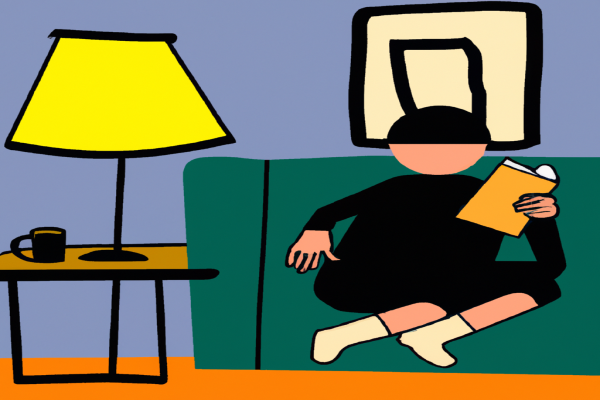Young Goodman Brown: Summary

Young Goodman Brown is a short story by Nathaniel Hawthorne in which the protagonist, Goodman Brown, leaves his Puritan home in Salem, Massachusetts and goes on a journey with the Devil. Along the way, he witnesses strange events that make him question his faith and the faith of those he loves. After a harrowing night, he returns home to find that his faith has been forever changed. The story serves to illustrate the struggle between good and evil and the power of temptation.
Want to know more?
What is Young Goodman Brown about?
Young Goodman Brown is a short story by Nathaniel Hawthorne that explores themes of faith, good and evil, and the loss of innocence. The protagonist, Young Goodman Brown, sets out on a journey into the woods to attend a secret gathering. During his journey he meets a mysterious figure who reveals dark secrets about his own faith and the faith of those around him. As Goodman Brown confronts the darkness around him, he is forced to question his own beliefs and how they will shape his future. Ultimately, Goodman Brown learns that evil is a part of life, but also that it can be resisted through faith and moral courage. The story thus serves as an exploration of the complex nature of faith and morality.
Young Goodman Brown: Book Club Questions
- How does Young Goodman Brown's faith in God change over the course of the story?
- What purpose do the symbols of light and darkness serve in the story?
- How does Hawthorne's use of irony help to shape the reader's understanding of the story?
- What is the significance of Goodman Brown's wife, Faith, in the story?
- How does Hawthorne use setting to convey a sense of foreboding and suspense?
- What are some of the themes explored in Young Goodman Brown?
- Is Young Goodman Brown an example of Romantic literature or a more traditional narrative?
- In what ways does Hawthorne explore morality and ethics in Young Goodman Brown?
- How does Young Goodman Brown's experience reflect Puritan society as a whole?
- What lessons can readers take away from Young Goodman Brown's journey?
What to say about Young Goodman Brown
- Young Goodman Brown is a great example of how an individual's beliefs can be challenged and tested in the face of temptation.
- Hawthorne uses symbolism to convey the moral ambiguity of Young Goodman Brown's experience in the forest.
- The story follows Goodman Brown as he struggles to reconcile his faith with his own inner darkness.
- It is interesting that Hawthorne chose to make the main character a Puritan, since their strict religious beliefs often clashed with their own human nature.
- The way in which Hawthorne portrays the supernatural elements of the forest creates a sense of unease and mystery for the reader.
- The use of allegory in the story allows readers to explore deeper meanings and themes about human nature and morality.
- In many ways, Young Goodman Brown serves as a cautionary tale, warning against the dangers of succumbing to temptation and straying from one's faith.
- One theme that emerges from this story is that all people have both good and bad within them, and it is important to remain mindful of both aspects.
- It is interesting to consider how our perceptions of right and wrong can be influenced by our own personal experiences and beliefs.
- Through its exploration of morality, Young Goodman Brown demonstrates that it is possible to find redemption despite making mistakes in life.
Top 5 Quotes from Young Goodman Brown
- "My Faith is gone!"
- "There may be a devilish Indian behind every tree."
- "The dew of the night had chilled my death-cold brow."
- "Evil is the nature of mankind."
- "The fiend in his own shape is less hideous than when he rages in the breast of man."
Adaptations of Young Goodman Brown
TV: -The Twilight Zone (1960) - Episode 8, "Young Man's Fancy" -American Masters (1996) - Episode 6, "Nathaniel Hawthorne: A Journey in His Own Mind" -Masters of Horror (2005) - Episode 7, "Cigarette Burns" Film: -Young Goodman Brown (1917) -Young Goodman Brown (1949) -Young Goodman Brown (2012) Radio: -The Mercury Theatre on the Air (1938) - Episode 11, "Young Goodman Brown" -Escape (1947) - Episode 39, "The Devil and Daniel Webster" Podcast: -Selected Shorts Podcast (2017) - Episode 9, "Young Goodman Brown" Theatrical: -Langston Hughes' Dream Variations: Young Goodman Brown (2008)
Other books by Nathaniel Hawthorne
- The Scarlet Letter
- The House of the Seven Gables
- The Blithedale Romance
- The Marble Faun
- Twice-Told Tales
- Mosses from an Old Manse
- Grandfather's Chair
- A Wonder Book for Girls and Boys
- The Snow Image, and Other Twice-Told Tales
- Tanglewood Tales for Girls and Boys
- Our Old Home
- The Dolliver Romance and Other Pieces
- True Stories from History and Biography
- Doctor Grimshawe's Secret: A Romance
- Main Street
- Fanshawe
- Septimius Felton; or, The Elixir of Life
- The Transformation; or, Miracles of Antichrist
Did you know?
Young Goodman Brown was Nathaniel Hawthorne's first short story, published in 1835.




